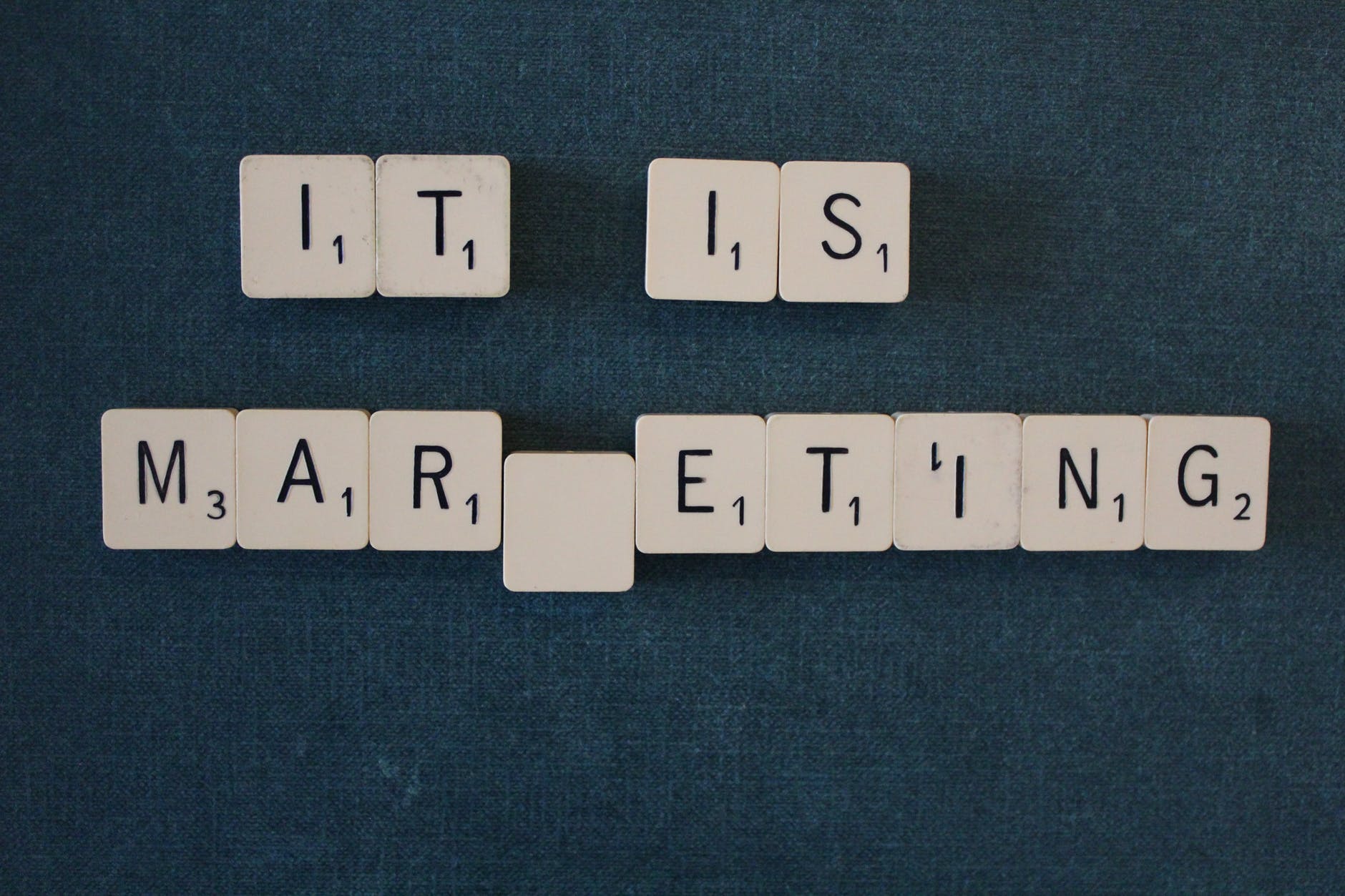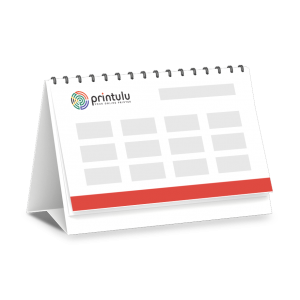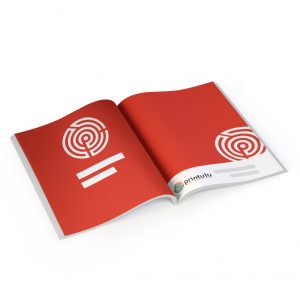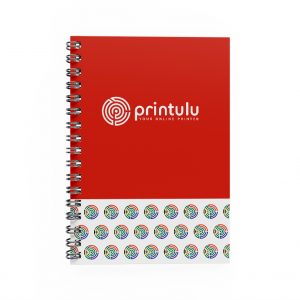You see the news and reports. In general, the effectiveness and return of traditional and digital media are declining. Ad blockers are on the rise, the continuous Facebook and Google algorithm changes affect your social media and Google ads, as well as your search results on search engines. TV ads get skipped, email marketing emails go directly to spam or a “promotions” folder, and all of us can barely stop and engage with outdoor advertising – unless we’re stuck in traffic. Essentially, as your arsenal of advertising methods increases, so do pressures against these new and existing channels, formats and tactics.
Look, things are not totally catastrophic. When your ads are seen, you do get some clicks, leads and sales. Your email campaigns are reaching a 20% open rate, achieving a moderate click-through rate and scoring an average conversion rate. You also notice some spikes in web and store traffic when your print ads and other above-the-line collateral running. You’ve done your market research and your loyal customer base also keeps you in business via repeat purchases and recommendations to their peers. So, you’re probably doing alright.
But, are you growing? And, more importantly, can you improve your results?
Growing? I’m not too sure about that.
Can you improve? Yes, as long as you are willing to put the work in.
So, how can you improve the results of your omnichannel marketing efforts amidst the pressures of available media and tactics?
The answer is Omnichannel Marketing.
You have probably heard this term before. You may think that because you use a number of channels to reach current and potential clients, you already have been implementing an omnichannel marketing approach. This is likely, but you also may be further from an omnichannel approach than you think.
This article unpacks what Omnichannel Marketing is, how to effectively implement an omnichannel approach, and how this will improve the results of all your marketing efforts.
First, a quick definition of Omnichannel Marketing, followed by an in-depth example. There are two terms to clarify here – “Multichannel Marketing” and “Omnichannel Marketing”. There is a difference!
Multichannel Marketing is using various platforms to reach and engage with your target audience. These channels are print, your physical location, your website, app, events, referrals, tv, social media, emails and more.
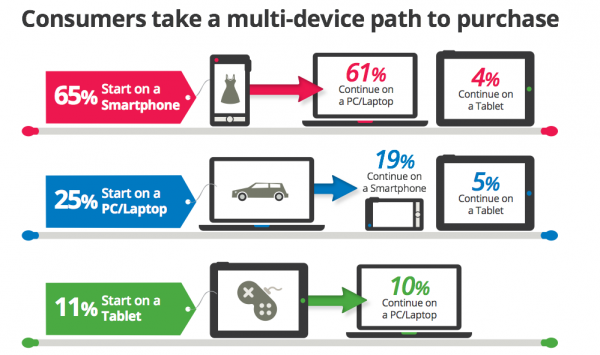
Multipaths to conversions. Source: Forbes
Omnichannel marketing integrates all these channels to create a seamless and valuable customer journey that drives a potential customer from recognising their need to being aware of your offering, and finally to becoming a customer. Furthermore, you can convert your customer into an active brand advocate. The key here is to use your marketing channels not just to reach your customer with your branding and messaging, but to actively and intelligently guide them through your customer journey using the most relevant content.
[Related: Integrating print and online marketing – tools, tips and tactics]
Here is an in-depth print-related example.
Let’s take Betty for example. Betty has just started a small business. We know that she needs to print business stationery. This includes business cards, presentation folders, branded notebooks/notepads, letterheads and product brochures. This is just some of what we offer that is highly relevant to a business owner.
Therefore, we want Betty to know about Printulu and our business stationery offering (awareness). We want her to order her business stationery from Printulu (conversion), and to continue placing more orders with Printulu for other relevant products such as flyers, pamphlets, banners and more (retention). We also want her experience to be so stellar that she recommends us to her friends, family, clients, suppliers and anyone she knows who needs printing to grow their businesses (advocacy).
Now, Betty has a lot of admin considerations to make and prioritize on her journey as a small business owner. Little time and a lot to do, something we can all appreciate. She probably has business stationery as an item on her to-do list, but it’s not something she can actively research and focus on now. Therefore, if we want Betty to consider us, in her journey to ordering business stationery, we need to make it easy for her.

Meet Betty
How do we do this?
So, Betty may spend her early days searching for business registration services, office space, job posting services, web developers, graphic designers and so on. This search behaviour tells Google (or anyone else who is actively listening) that she is a founder, director or manager of a small business. This puts her squarely in our target market.
We have ads running on Google AdWords targeting the small business owner segment. When Betty browses websites showing AdWords Ads, she will likely see our ads. Now, we cannot assume that once she sees an ad for business stationery then she will buy it right away. She is still in the early research phase and wants more information that will help her make a decision given her limited resources (time and money). Therefore relevant content here is not a “buy business stationery now” advert, but a content piece (blog post) that will educate her on what business stationery she needs, how to design it and where she can get it.
All we need to do at this point is inspire her need for business stationery, give her the necessary information to act sooner rather than later and inform her that we are the reliable providers thereof. So the most appropriate content in this situation is our blog post titled, “Your Business Stationery Check List“. We can further target these ads to show only on websites with content related to starting and growing a business.
But what if Betty does not see our ads online?
Being a small business owner, she is likely situated in a business park or shared office space. These offices are usually close to high-traffic areas such as malls and shopping centres. So, we can reach her there using promoters to hand out our pamphlets showing our office stationery offering.
Because this format does not allow us to have as much copy as the blog post, this will have to be a shorter message, e.g. “Need business Stationery?”, with a few products, a short key message (“Order online and get free delivery”) and a call to action (“Visit www.printulu.co.za and see what business stationery you need”). This will drive her to a landing page where she can learn more about what business stationery she needs. We can also include a link to the blog post on this landing page.
[Related: Get effective distribution for your printed materials]
Step 1 – Awareness has been achieved.
Both the online advert and the pamphlet drive her to our website. That is the main action we want to achieve. Why?
A website visit indicates interest. This means Betty is interested in purchasing business stationery, even if she is not ready to purchase it. This also enables us to remarket to her with valuable content. E.g. If we have a special offer on presentation folders then this information may be valuable to her. We also start building a relationship with her by offering her a formal quote, subscribing her to our newsletter, offering an ebook that’s available for download, or a free design in exchange for her email address.
Once we have her email address, we can continue engagement through a series of relevant emails. This is a sequence of four automated emails that provide Betty with the information she needs to get to the point of making an order. An example sequence is; Email 1 – How to use the website, Email 2 – Get to know us, Email 3 – Getting your design print-ready, Email 4 – A relevant product catalogue.
Take a look at the Soap Opera Sequence for a more in-depth analysis of this email sequence here: Soap Opera Sequence
Also, because Facebook can aggregate similar people to Betty (using their algorithm and tracking pixel) we can show the same starting ad, content, and sequence to other small business owners like Betty.
What does this mean?
Now, at this point, either Betty has realised her pressing need for business stationery and placed an order immediately, or she is planning on doing so soon. What our marketing has achieved so far is to make her aware of Printulu, aware of our offering, showed her how to easily place her first order, outlined benefits relevant for business owners, and provided her with the content she can use to get the most from her printing at the least expense.
We can safely assume that if Betty has not ordered already, she will likely order from us soon. She will either visit the website directly, click on an email, search for “Printulu” or the product she needs (see one of our search ads or organic results) or click on a display advert.
Step 2 – Conversion has been achieved

Conversion
So far we have used omnichannel marketing to convert Betty into a customer as well as reach and convert people similar to her.
We can stop here, but we know a repeat customer is more valuable than a once-off customer.
So, in Betty’s package that will be delivered to her after her order, we will include a brochure with similar products. Not just business stationery, but promotional items, retail collateral or anything that is highly relevant to her. We will also include paper samples illustrating other finishes and paper types that she could have ordered.
She will also receive this catalogue of similar products via an email that confirms her delivery and requests feedback on her experience. We can use this feedback as a customer review on the relevant page and use it to improve our services.
This does 3 things:
- Cross-sell – by showing her related products that she can order.
- Up-sell – by informing her of upgrades she can make to her next order.
- Advocacy – by using her review to inform other buyers of what they can expect.
Steps 3 and 4 – Retention and Advocacy achieved.
Therefore, by integrating our marketing channels and by applying the right content to a stage in our customer journey; we have acquired a customer, converted her into a repeat customer and inspired advocacy.
This is an ideal that we are aiming for, we are not quite there yet. So just like you, we want to know: ‘How do I do this?’

Know who you are targeting
Know and understand who you are targeting
- Analyse your current customer base.
- Who is benefitting from your product and service?
- What are the common characteristics, behaviours, and interests that they share?
- What products or services do they order?
Use this information to build segments by grouping shared characteristics, behaviours and needs. Once you have that you can go to the next step of mapping the customer journey.
Remember to constantly update this information and keep it in a central database, such as customer relationship management software (CRM).
Tools you can use:
- A CRM – Salesforce, Hubspot CRM, Zoho.
- Analytics – Google Analytics, Adobe Analytics, Kissmetrics.
- Data Visualisation – RJ Metrics, Tableau, Google Data Studio.
Understand your customer’s journey
The general steps in the journey are:
- Awareness
- Research
- Consideration
- Evaluation
- Decision
Your objective is to move your prospect from not being aware, to making a purchase decision. Do this by matching the need, content and channel to the most appropriate stage in the user journey.
Note, this does not apply to only your common advertising channels. Remember that customer service, dispatch and even HR are channels/touch points relevant to some stages in the journey. If you are a service business, you may find that your customers may look up your employees on LinkedIn, or your potential customers are also potential recruits.

Journey Mapping
Try to visualise this. Seeing what this looks like on one page will help you to match the most appropriate content to the right channel and stage in the customer journey. Relevant channels are:
- Your physical location
- Company website – remember to make key pages work on the most relevant devices if not all devices.
- Mobile app
- Product Catalogue
- Social media pages
- Display Advertising
- Search advertising
- Direct phone calls
- Emails
- Customer facing departments
- Back office departments
- High traffic areas
The above journey does not apply to all businesses. Your sales cycle or closure time may be one day as an e-commerce company or over many months as a SaaS company or B2B company.
Also, speak to your sales team to get some clarity and try to see your company, your product/service offering, and the need you address, through your customer’s eyes. Walk in your customer’s shoes.
Tools you can use:
- CRM – use this to see your average closure time and what steps your prospects take to become a customer.
- Analytics – use this to see which channels people come from and what action they take from the channel.

Teams
Cross-functional teams
As mentioned above, this is not an advertising channels integration only. You are integrating more channels than usual advertising channels and therefore more teams than just your marketing team and agencies.
Therefore, when mapping your customer journeys and implementing your omnichannel strategy, include your sales, HR, dispatch, product, finance and any other teams/departments that directly, or indirectly, interact with your customer. Building cross-functional teams ensures that you will have a full view and understanding of your customer’s journey and include informed people that can inform the right content and implement the necessary procedures to achieve success.
Tools you can use:
- Project and team management platforms – Asana, Basecamp, Trello.
- Team communication tools – Slack, Mattermost, Stride.
Understand your ad-serving platforms
Ad serving platforms are always increasing their abilities to reach your target customer, with the most relevant content, at the right time. Whether you manage the platforms yourself or use media agencies, it helps to know what is possible and how you can incorporate this into your omnichannel marketing.
Display Advertising.
It’s important here to understand your targeting options. The available demographics, available interests and available behaviours. Know if you can target certain websites and exclude others. Know the different bidding options and programmatic tactics available to you, and other granular targeting options such as time of day, device, geolocation, etc.
Search Advertising.
Relate specific keywords and text ads to specific stages. Being generic means you will reach people searching for something related. However, creating ad groups that target “buy now” (decision), “how to” (research), “what is” (research), location-specific searches, and comparison-specific searches (consideration), allows you to create ads that address the searcher’s need. Ads that address that exact need will get you more website visits than a generic “buy now” ad. Remember website visits, even without an immediate purchase, are valuable for remarketing.
Remarketing.
Simply put this is showing ads across display networks through cookie tracking. Remarketing allows you to persuade a user to return to your site and complete an action by showing them relevant content. Find out what remarketing functionality your display network or ad-serving platform allows for, and how granular you can target someone. Google Adwords, for example, can show different content to someone who visited your website in the last 5 days versus someone who visited in the last 20 days. Each of these people are at different stages of the buyer journey.

Advertising
Custom Audiences.
Facebook and Google allow you to upload a list of your customer details (with their consent), such as phone number or email address, that you can use to reach those specific customers or reach customers who are very similar to them. This is useful for all stages of the journey. Note, the platforms only match data that they have to the data you upload. The data is encrypted (or hashed) so that it can only be matched to existing users on the platform while protecting the privacy of data they don’t already have. Ensure you inform customers on how you will use their data in your privacy policy.
Always have a general understanding of the current and new functionality provided by these platforms, whether you use an agency or not.
Tools you use:
- Ad platforms: Google AdWords, Facebook Advertising, LinkedIn Advertising.
- Knowledge Resources: Google Primer, Growth Hackers, Hub Spot Blog.
Create relevant content
Content is used broadly these days, so let’s define it. Content is information that is practical, functional, tactical and directed at an end user. This can come in many formats, such as:
- Online – website pages, display banners, blog posts, infographics, landing pages
- Social media – social media posts, updates and pages
- Print – print advertising, brochures, annual reports, flyers, pamphlets, inserts
- Out of home – billboards, banners, signage
- Video – TV advertising, YouTube videos, Vimeo videos
- Product Accessories – instruction manuals, packaging, tags
- On-premise – counter stands, posters, pull-up banners, x-banners
Consider your channel and available format when creating your content. Also, determine your key message, the prospect’s need and your call to action when designing your content.

Content
Tools you can use:
- Create content – Canva, Snappa, Stencil.
- Hire Freelancers – 99 Designs, Fiverr, Design Contest
- Blogging – WordPress, Medium, Wix
- Landing pages – Unbounce, Leadpages, Instapage
- Stock photos – Unsplash, Pexels, Shutterstock
- Printing – Printulu
[Related: 4 ways to save money on graphic design]
Marketing automation
Before marketing automation, an email strategy was just one newsletter sent out daily, weekly or monthly to all subscribers. We still use newsletters today as they’re useful for maintaining communication with your subscribers and updating them on any new developments. However, at an average open rate of 20%, there’s an additional 80% that you are missing.
With marketing automation, you can reach the remaining 80% by building segments based on certain characteristics and behaviours that match the stage of your customer’s journey.
You can then send targeted emails to these segments based on certain triggers. Basic triggers are subscribing to a specific list, opening a specific email and/or clicking on a particular link. Advanced triggers are visiting a specific page, performing a certain action on that page, or accumulating a particular lead score.
Start with one segment and a series of emails first. Understand what behaviours those emails drive, which ones get the most engagement, and achieve their objectives. You can use these insights to expand your segments and email campaigns/sequences.
Tools you can use:
- CRM – this is where all your customer data is kept. Try to use an automation tool that integrates directly with your CRM.
- Marketing Automation – Mautic, Marketo, Hubspot.
- Integration tools – Zapier, IFTTT

Automation
Measure Everything
You will have a number of channels running with different content, triggered at different times through various actions, resulting in a multitude of engagements. All of this needs to be analysed and optimised to get the maximum return. To manage this you have to measure everything.
Start simply by adding Google Analytics to your website. In most cases, your website is the main channel where you are driving most of your traffic. If you are a physical store then use your point-of-sale system to measure as much as you can. At the very least ensure you can relate changes in your sales to specific marketing initiatives.
What you want to know is:
- What is working?
- How can you improve? (Modify, pause or scale)
- What is your ROI?
- Have you achieved success?
- What has led to failure?
Tools to use:
- Analytics – Google Analytics, Adobe Analytics, Kissmetrics.
- Data Visualisation – RJ Metrics, Tableau, Google Data Studio.
- URL Tagging: Campaign URL Builder – to properly track the impact of channels, content and campaigns.

Measuring
The bottom line.
Omnichannel marketing is essentially a customer journey strategy. Understanding your customer journey and the interventions you can make to get them to the next step is a great start. From there you need to understand the channels available to you, the content formats, the teams and departments you should inform and involve as well as how to integrate everything seamlessly. This is why being able to visualise the entire process in one view is important. There are a lot of elements that can be integrated.
It’s clear to see that the pressures negatively impacting the performance of your current media and tactics can be reduced by omnichannel marketing.
Remember, as much as this is about tools and data, all of that is supported by your people who have a good understanding of your customer’s needs and pain points. Your people are your most valuable tool in implementing and seamlessly integrating this approach. Get the right people/teams in the room early on in the journey, ensure they understand what you are trying to achieve, and what this looks like if it is successful, and empower them with the right tools, budget and approvals.
Lastly, see the journey, the content, the channels and the objectives through the eyes of your customer and not just your company. Think of it as marketing as a service to your prospects and customers.
Resources:
- The Definition of Omni-Channel Marketing – Plus 7 Tips
- 7 Outstanding Examples of Omni-Channel Experience
- How to Plan and Create the Perfect Omni-Channel Marketing Strategy
Related:
- Integrating print and online marketing – tools, tips and tactics
- Get effective distribution for your printed materials
- 4 ways to save money on graphic design
- Print and AR – 5 Things You Should Know
- The Ultimate Printing Guide


